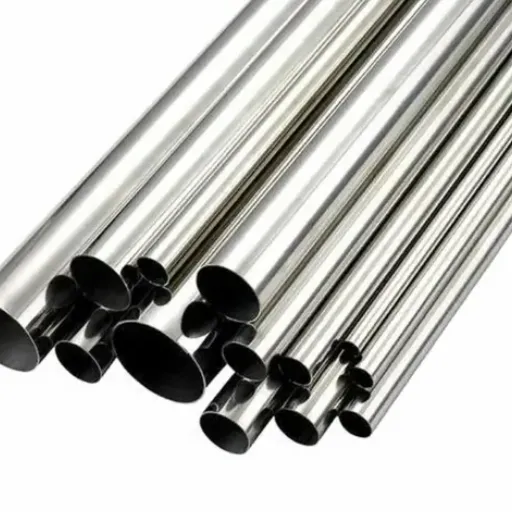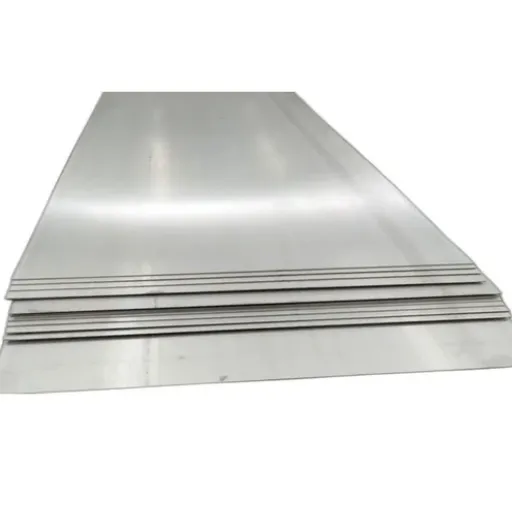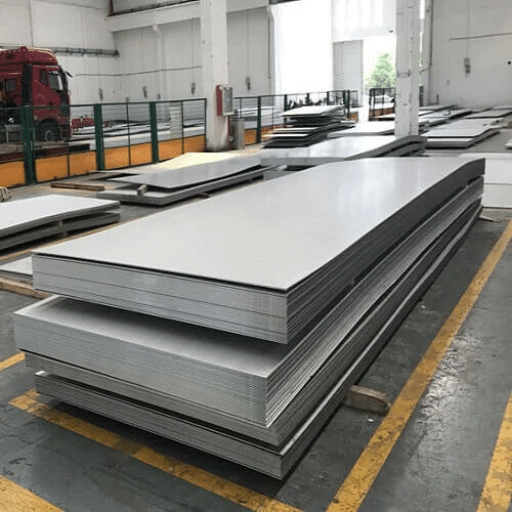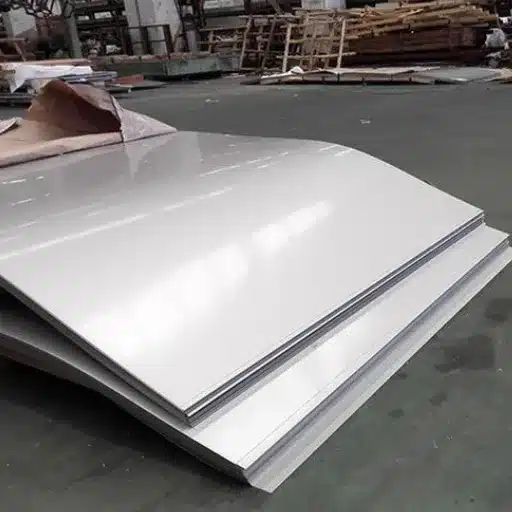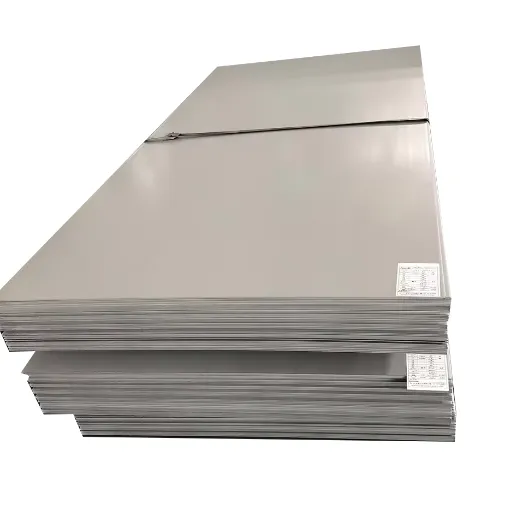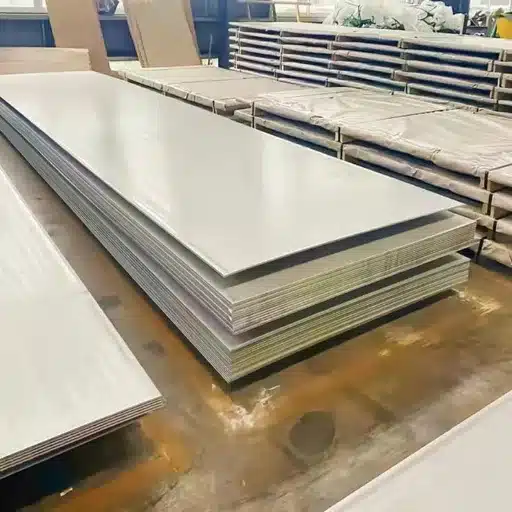Tubing is a crucial part of several industries, including construction, automotive, aerospace, and manufacturing to name a few. Nevertheless, most people find it difficult to choose the right type of tubing for their specific application because of the many choices available. Among the most widely used tubing options are ERW (Electric Resistance Welded), DOM (Drawn Over Mandrel), and seamless tubes, each one having its particular properties and uses. But what are the key differences between them? Explanation of how to choose the one that meets your requirements comes next in this article. Therefore, if you are either a professional in the area or just interested in the manufacturing world, you will get a good knowledge of these tubing types along with their benefits by the end of the article.
Overview of Tubing Types
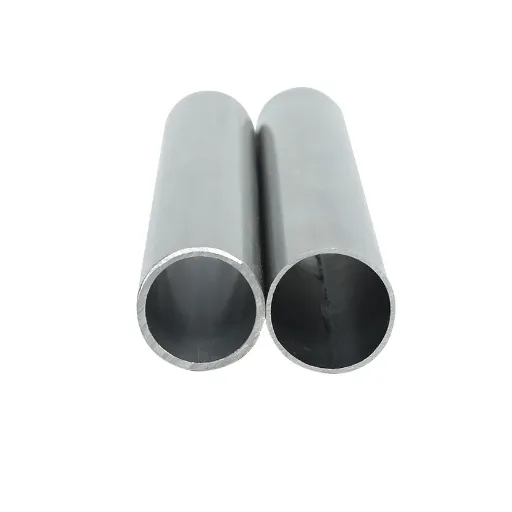
What is Seamless Tubing?
Seamless tubing is a distinct type of tube that does not have any welding or seams, which makes it different from welded or other kinds of tubing. It is done through a technique where a solid cylindrical piece of metal, usually steel or stainless steel, is heated and then pierced to produce a hollow tube. This way, a uniform structure with no joints is obtained, which strengthens and makes it more durable at the same time.
The high resistance to pressure of seamless tubing is one of its main benefits. Tubing without welds or joints can take the highest levels of mechanical and thermal stress, thus being perfect for demanding applications. It is a common practice in the fields of aerospace, automotive, and construction, as well as the transportation of gases and liquids under extreme conditions, to use this kind of tubing.
Moreover, seamless tubing not only has a very high corrosion resistance but also, has smoother internal surfaces than some other types of tubing. This quality, among others, allows seamless tubing to be used in applications that require high precision, such as in medical devices or instrumentation, where consistency and reliability are of the utmost importance. The absence of welds not only eliminates weak points but also enhances the long-term performance and safety of seamless tubing in critical systems.
What is ERW Tubing?
Electric Resistance Welded (ERW) tubing is a type of tube that is made using a welding process where sheets or strips of metal are rolled and joined end-to-end by electric resistance. This tube has a weld that is strong and reliable for a wide range of uses. The ERW tubing is very much engaged in the automobile, building, and electricity sectors among others because of its strength and flexibility.
Low cost is one of the major benefits of ERW tubing. The production method is quick and cheap compared to seamless tubing, for instance. Moreover, ERW tubing is offered in a large variety of sizes and wall thicknesses, which makes it fit for both standard and special requests. While the seam is a significant factor, technology has made it easier to produce welds that are of high quality, thus, allowing the seam to bear high pressure in many cases.
The ERW tube is less uniform than the seamless pipe but still is a very good choice for a wide range of applications where harsh conditions are not the primary concern. Industries use it for water pipes, scaffolding, and even fencing having regard to its properties. Its mix of low price, long life, and ability to adapt has made it a widely accepted and handy option for dozens of industries.
What is DOM Tubing?
DOM tubing, or Drawn Over Mandrel tubing, is among the best-quality steel tubes that are most required tubes first of all because of their strength and precision. Also, one of the main differences between the DOM and other types of tubing is that the former is made by cold drawing an ERW (Electric Resistance Welded) tube through a die and over a mandrel, which creates a clean and uniform surface that boosts the tube’s mechanical properties by eliminating the weld seam’s irregularities. So, the ones who get the benefits from the process are the tube and its users through the resulting features.
One of the most important benefits of DOM tubing is the very high dimensional accuracy it offers. It means that this tubing would even be perfect for applications that absolutely cannot afford to have even the slightest variations in dimensions or performance. Also, the smooth finish and enhanced structure help a lot in the widespread use of the metal industry; among them are automotive, aerospace, and heavy machinery. The examples are the very important parts of these industries such as drive shafts, hydraulic cylinders, and machine components where reliability is critical.
Moreover, DOM tubing is also exceptionally good in tensile strength and durability hence able to take a lot of stress without being deformed or even broken. Its strength, size accuracy, and seamless appearance together make it the one that offers the highest level of performance compared to other tubing types. Therefore, DOM tubing has been the preferred one in those demanding applications that need a mix of accuracy and strength all along.
Manufacturing Processes
Seamless Pipe Manufacturing
The production of a seamless pipe starts with a solid cylindrical piece of metal, most often steel, referred to as a billet. This billet is generally subjected to heat of such high degrees that it is then pierced through the middle by a mandrel or a die to produce a hollow tube afterward. This first process is very often called the rotary piercing procedure. Later on, the steel pipe is stretched and formed to the required sizes by rolling processes like plug rolling, pilger rolling, or stretch-reducing mills. These methodologies provide accurate measurements and the same quality all over the crackless pipe structure.
Among the main benefits of the seamless pipe manufacturing process is that it can yield pipes with no welded seam—this alone cuts down the chances of weaknesses or flaws tremendously. Thus, the pipes become perfect for the toughest cases of application room and the hottest or coldest varieties of places. The steeliness of the seam also helps a lot in the pipes’ resistance to corrosion, making them even more attractive to the above-mentioned industries along with chemical processing. Main characteristics like higher tensile strength, durability, and better pressure tolerance make seamless pipes the first choice over welded ones in these critical applications and many more.
In today’s world, the manufacturing of seamless pipes incorporates cutting-edge technologies and quality control systems for even better performance and reliability. Precision in thickness measurements are guaranteed by mechanical systems while non-destructive testing techniques such as ultrasonic inspection and radiographic testing unveil any subsurface defects. These inventions do guarantee that seamless pipes comply with strict industrial norms and are fit for use in high-end markets. The combination of modern methods with basic principles has made seamless pipe manufacturing process an industry leader in precision engineering.
Electric Resistance Welded (ERW) Process
Electric Resistance Welding (ERW) is a method that has gained considerable popularity in the pipe and tube industry due to its high standards of quality and productivity. The steel strip is first rolled and formed into a cylinder, and then the edges are joined together by means of electrical resistance heating. ERW, unlike standard welding, does not require filler metals, external heat or any other source, thus making it a clean and very efficient manufacturing process. The entire operation takes place under controlled conditions, which guarantees the uniformity and consistency noticed in the final product’s structural integrity.
It is precise that the skillful ERW process can be adapted to different diameters and specifications as a major benefit. The different thicknesses of the pipes and their diameters can be varied by the manufacturers according to the different industries’ requirements which may very well be oil and gas pipelines, structural applications or even water transportation. Moreover, while the practical aspect of automation is going on, real-time quality monitoring is one of the main features that makes the ERW process really reliable. Sophisticated control systems take note of the possible defects at the time of welding, thus helping the operators keep up with the highest standards of quality as well as minimizing material wastage.
Furthermore, present-day ERW technology has been focusing its attention on environmental sustainability. The manufacturers are cutting down the carbon footprint by reducing energy consumption and emissions during the different phases of the production process. Moreover, the main input material, which is steel, is highly recyclable thus contributing to the reduction of the manufacturing impact on the environment. The intersection of precision, efficiency and environmental consciousness makes the ERW process an indispensable part of the present-day industrial practices and a significant participant in the evolution of welded pipe production.
Drawn Over Mandrel (DOM) Manufacturing
The Drawn Over Mandrel (DOM) manufacturing process, which is quite complex, finally results in the production of high-quality, seamless steel tubes that are not only dimensionally accurate but also internally smooth. However, the tubes typically produced from the Electric Resistance Welded process (ERW) do not go through such a laborious process, which is why they cannot match the quality of DOM tubes. The extra passing of the drawn tube, which is now so-called ‘cold drawing’, leads to a higher level of mechanical properties as well as surface quality and thickness uniformity. The very first step of this process is done by putting a mandrel inside a steel tube and then pulling it through a die, thereby causing the thickness or the outer diameter of the stainless-steel tube to gradually decrease. The result is a very precise DOM tube with minimum inconsistencies and high tolerances. Thus, these tubes excel in strength, which makes them suitable for applications in the automotive, aerospace, and heavy machinery sectors.
The benefits of the DOM tubes can be traced back to their performance properties that are better than the rest of the market. One of these properties is the cold-drawing process by which the tube is strained hardening. The final product has higher tensile strength compared to the unprocessed tube and this translates into being able to withstand more duration or higher loads before it fails. By maintaining the delicate and uniform surface of the DOM tubes, the manufacturers can use them in hydraulic and pneumatic fields where the applications of the compressor and pump are directly connected to friction. The entire process yields a superior product with an exception of weld lines and seams that are not visible hence improving the aesthetic as well as the usability aspect, especially, in the engineering projects whose requirements are quite harsh.
In addition to this, the DOM manufacturing process goes a long way in making the industry more sustainable. The entire manufacturing process requires only a small amount of quality raw materials, which are usually recyclable thus making it possible to dispose of the waste generated during the process in a manner that does not pollute the environment. Besides, there are other factors such as the use of energy-efficient machines and precision engineering under the umbrella of manufacturing technology advancements that allow manufacturers to reduce energy consumption as well as material losses. The implementation of these good practices not only helps to the development of eco-friendly manufacturing practices but is also instrumental in maintaining the high standards that modern engineering solutions require.
Key Characteristics

Surface Quality of Seamless vs ERW
Seamless tubing presents a texture that is a bit rougher, meanwhile, ERW tubing provides skin surfaces both inside and outside that are smoother because of its controlled welding method.
|
Key Point |
Seamless |
ERW |
|---|---|---|
|
Surface |
Slightly rough |
Smooth |
|
Finish |
Less refined |
Highly refined |
|
Inner Weld |
No weld |
Smooth weld |
|
Outer Weld |
No weld |
Smooth weld |
|
Uniformity |
Moderate |
High |
|
Machining |
May need extra |
Minimal needed |
Mechanical Properties Comparison
The comparison of DOM (Drawn Over Mandrel) tubing and seamless and ERW (Electric Resistance Welded) tubing in terms of mechanical properties brings to light some essential differences. The cold-drawing technique is responsible for the superior finish of the DOM tubing, the highly accurate dimensions, and the improved strength. The grain structure is made finer and the irregularities are removed, which results in a more uniform and predictable mechanical performance.
Seamless tubing is highest in tensile and yield strength usually because of the absence of a weld seam and thus the stress is more evenly distributed during the application. ERW tubing, which has wonderful mechanical properties, may still be at times weaker near the weld seam. Nevertheless, with modern techniques such as high-frequency welding used in ERW manufacturing, the strength and other characteristics of the product have become more reliable and consistent.
When considering very tight tolerances, DOM tubing usually is the best of all three because of its high dimensional accuracy. The cold drawn process guarantees perfect concentricity, more stringent tolerances on the outside (OD) and inside diameters (ID), and wall thickness that is evenly distributed. Furthermore, the DOM tubing is highly machinable and, therefore, a good candidate for application in situations that require intricate and/or complex fabrication processes.
The comparison brings bringing into light again the double-edged sword of intended use versus material choice. To be precise, although all three types of tubing have good mechanical performance, the final decision will always depend on the demands of the engineering or manufacturing project.
Tolerance Levels in DOM, ERW, and Seamless Tubing
The tolerance levels of DOM, ERW, and seamless tubing are applicable in different industries and will thus be a factor in deciding the level of precision-driven projects. As to DOM (Drawn Over Mandrel), the tubing is noteworthy as a presentation of extreme dimensional precision and strictest tolerances, all because of the very drawing process that gets rid of the ever present material inconsistencies. Hence, DOM tubing is the most suitable for applications where precision is the most, e.g., in automotive and hydraulic systems.
As for the ERW (Electric Resistance Welded) tubing, it may not be as precise as the DOM tubing, but still, it can be relied upon to provide consistent performance and to be the same size everywhere. Its levels of tolerance are mostly good for construction applications, where, in contrast to precision, the factors of strength and cost-efficiency are of utmost importance. Use of ERW tubing can be seen in various sectors like construction, mechanical parts and general manufacturing.
On the whole, the weld-free seamless tubing gives the manufacturer and the consumer the strength and reliability of the product. Besides, its level of tolerance is not as strict as that of DOM tubing but depends on the chosen manufacturing process and specifications. The oil and gas industry is among the sectors where seamless tubing is the most common choice because these tubes can withstand very high pressures and provide absolute reliability even in harsh conditions.
To decide on one from the three different kinds of tubes, one first has to be very clear about the needed tolerances and the project requirements; this will guarantee that the chosen tube will perform well and be the most cost-effective.
Advantages and Disadvantages
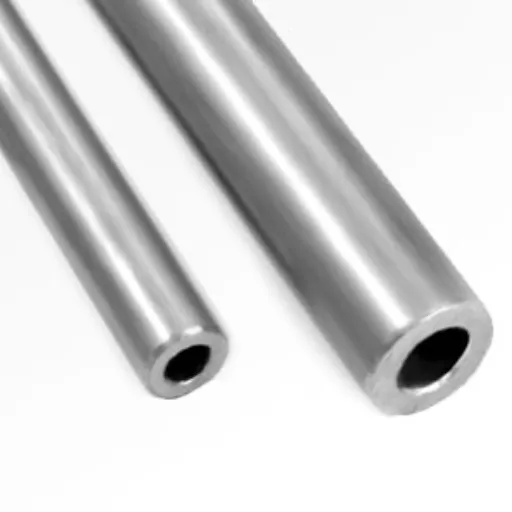
Pros and Cons of Seamless Tubing
Pros of Seamless Tubing
- High Strength and Durability: One of the most important factors for seamless tubing is its high strength and durability. Seamless tubing is made without a welded seam that adds to the strength and endure mechanical stress, making it perfect for high-pressure applications, like hydraulic systems and pipelines.
- Improved Pressure Resistance: Seamless tubing can support more significant internal and external pressures because of its uniform structure, in contrast to welded tubing. For instance, the oil and gas industry often uses seamless pipes that can withstand up to 20,000 psi or even more.
- Enhanced Corrosion Resistance: As there are no seams or welds, the corrosion risk at these very spots is considerably minimized. Hence, the pipes’ life spans are extended in very hostile environments like chemical processing plants or marine where the direct use is impossible.
- Better Performance in Extreme Conditions: Seamless tubing is capable of handling the most severe conditions, including high temperature and pressure swings. For instance, it is being used in heat exchangers and boiler systems, where thermal stability is critical.
- Versatility in Applications: Seamless tubing can be employed for a wide range of applications, from automotive to aerospace industries, owing to its versatility and the possibility to adapt it to different sizes and thicknesses.
Cons of Seamless Tubing
- Higher Cost: The manufacturing process of seamless tubing is more complex and labor-intensive, which leads to a higher cost than welded tubing. For example, seamless tubing can be priced 20-30% above its welded counterpart.
- Limited Size Availability: Seamless tubing has limitations in terms of size and length that stem from the manufacturing process. Projects needing larger pipes may face difficulties because of these limitations.
- Time-Consuming Production Process: The elaborate manufacturing process for seamless tubing results in longer production timeframes, which can cause delays in projects that have strict deadlines.
- Higher Scrap Rate in Manufacturing: Seamless tubing production usually results in higher raw material wastage since it is a processing method involving machining and rolling of the raw materials and consequently affecting overall material efficiency.
- Difficulty in Achieving Tight Tolerances: Seamless tubing is robust and durable. However, it may sometimes come with non-uniform wall thicknesses, which increases the complexity of achieving the super-precise tolerances that some applications demand.
By weighing these advantages and disadvantages very carefully, project engineers will be able to make wise selections regarding the type of tubing that will serve them best.
Advantages of ERW Tubing
- Cost-Effective Production: ERW (Electric Resistance Welded) tubing is often the less costly alternative to seamless tubing production. The production technique makes use of flat steel strips or coils that are easily accessible and cheaper than the raw materials used for making seamless tubing. Thus, ERW tubing is more economic-friendly for different sectors.
- Efficient Manufacturing Process: The ERW technique is characterized by a high degree of automation and good quality control throughout the process, hence large quantities of the product can be produced at the same time. This high level of production leads to shorter wait times and faster manufacturing processes, allowing producers to react promptly to the market demand by supplying large volumes.
- Precise Dimensions and Consistent Wall Thickness: In comparison to seamless tubing, ERW tubing provides accurate dimensions and uniform wall thickness. The quality is especially beneficial for applications that have strict tolerances like in the automotive and construction sectors.
- Wide Range of Sizes and Specifications: ERW tubing has a large selection of dimensions, wall thicknesses, and lengths. Its extensive specifications enable it to cover a wide range of applications starting from structural support to engineering projects.
- Eco-Friendly Manufacturing: ERW tubing production is less wasteful of materials than seamless tubing. The method of utilizing flat steel strips and recycling scrap materials leads to a more eco-friendly approach in manufacturing, hence the reduced environmental impact.
Drawbacks of DOM Tubing
- Higher Cost: DOM (Drawn Over Mandrel) tubing usually has a higher price than ERW tubing due to its process of manufacturing. The extra steps such as cold drawing and precision shaping, increase both labor and machine overheads more than the regular process.
- Limited Size Availability: DOM tubing is not very common when it comes to a wide variety of sizes and thicknesses as it is with other types of tubing. It can thus become unsuitable for highly specific dimensional requirements or larger diameter applications.
- More Energy-Intensive Production: The production process of DOM tubing consumes more energy as it undergoes cold drawing and precision finishing after the initial creation which accounts for larger carbon footprint than other tubing types like ERW ones.
- Susceptibility to Surface Imperfections: DOM tubing, while often noted for its very smooth interior surface, may still have some minor defects on the outside coming from the production process. These imperfections can sometimes call for extra machining or treatment for specific applications.
- Less Suitable for High-Volume Orders: The sophisticated way of producing DOM tubing plus the slower rates mean that this tubing might not be the best choice for high-quantity, time-sensitive orders. Companies that require large amounts of tubing are likely to experience longer lead times and increased costs.
Common Applications

Use Cases for Seamless Tubes
Based on my experience, seamless tubes are very versatile and extremely strong. One of their most important applications is in very high-pressure locations, such as hydraulic cylinders and heat exchangers, where no weld seams are present and thus, the product’s life is extended, and the possibility of failure is minimized. The performance of seamless tubes at such extreme pressure and temperature fluctuations makes them a must in the energy, oil, and gas, and manufacturing industries.
Seamless tubing finds its way into the automotive and aerospace sectors, too. These sectors expect parts that are hardy and durable but at the same time highly accurate and reliable. Seamless tubes, for example, are perfect for fuel systems, landing gear, and building blocks due to their strength and performance in such critical areas. Their non-rough inner surface also plays a role in effective fluid movement and, at the same time, very little wear over time.
In the end, seamless tubes are indispensable in the medical and pharmaceutical-related fields. Their outstanding rust resistance and cleanliness are the two main reasons why they are selected for surgery tools, implants, and equipment in laboratories. The meticulous finishing and uninterrupted sizing satisfy the strict regulations established for such gentle usages. In general, seamless tubes are an indispensable part of various industries and are responsible for the safe, trustworthy, and efficient use of their operations.
ERW Pipe Applications
- Oil and Gas Transportation: ERW pipes are the primary medium for the transportation of oil, gas, and other fluids because of their superb dimensional accuracy and the capability to withstand high pressure and also their reliability that supports having them as the best option for pipelines in both onshore and offshore surroundings.
- Water and Sewage Systems: The pipes are very much essential in the process of providing water and disposing of sewage in a city or town. The resistance to corrosion and the low cost make them really good for the transportation of water and waste over long distances.
- Structural and Construction Applications: ERW pipes are a very common material in the structural sector for scaffolding, building frames, and other purposes among others. The constant wall thickness of pipes guarantees safety and brushiness for critical structural components.
- Automotive Industry: Pipes are an important part of the exhaust systems, chassis, and axles manufacturing process. Their strength and light weight help improve the overall performance of cars.
- Agriculture and Irrigation: Pipes are applied in irrigation systems to move water effectively over the entire field. Their ability to withstand harsh conditions, the adaptability to different fittings, and durable performance in the running of the agricultural operations ensure the long-term use of pipes.
DOM Tubing in Industrial Settings
DOM (Drawn Over Mandrel) tubing is a key material in various industrial applications because of its high strength, long life, and accurate dimensions. Its capability to be produced according to the exact specifications makes it the first choice for industries that need reliability in extreme stress and pressure conditions. DOM tubing, unlike other varieties of tubing, has the best weld integrity and also the performance that is consistent, thus making it suitable for the applications that have tight tolerances and require seamless structural integrity.
The usage of DOM tubing in hydraulics is one of the main industrial applications. The construction, mining, and manufacturing industries are some of the ones that rely on hydraulic machinery to perform heavy duty tasks. DOM tubing is the source of strength and pressure resistance that is needed for hydraulic cylinders to operate properly and efficiently without the risk of failure. Moreover, the inner surface of the DOM tubing that is smooth results in the hydraulic fluid flow causing the least wear and tear over the tubing thereby maintaining the operation of the demanding industrial processes throughout the time.
In addition to hydraulics, DOM tubing finds a wide application in the making of precision machine components. Its thickness that is constant all through the tube and its better mechanical properties make it perfect for making parts such as telescopic systems, conveyor rollers, and support structures. Besides, the resistance of the material to fatigue and corrosion allows it to work efficiently in the harsh industrial environment. The industries are continuously on the lookout for innovations that can be incorporated to boost safety and reduce the costs of operations and the adaptability along with the performance of DOM tubing continues to be the mainstay for the modern manufacturing as well as the operational standards.
References
-
University of Virginia – Product Guide
This guide provides detailed information on various types of pipes and tubes, including seamless and ERW, with specifications and applications. -
Cornell Law School – California Code of Regulations on Steel Tubing
This regulation discusses the use of ERW and DOM steel tubing in specific applications, highlighting their construction and quality standards. -
Academia.edu – Old School Chopper Frame Fabrication
This document compares DOM and seamless tubing in the context of frame fabrication, providing insights into their cost and structural properties. -
University of Oregon – Design Development Specifications
This specification document includes details on ERW, DOM, and seamless tubing, focusing on their mechanical properties and applications. -
U.S. International Trade Commission – Carbon and Alloy Seamless Tubing
This publication outlines the differences between seamless and ERW tubing, particularly in terms of diameter and manufacturing processes. - Click here to read more.
Frequently Asked Questions (FAQ)
Q: What is the principal distinction between erw dom and seamless tube?
A: The principal distinction between erw dom and seamless tube is rooted in their production mechanism. ERW (Electric Resistance Welded) DOM (Drawn Over Mandrel) tubes are produced from a flat steel sheet which is rolled into a pipe and subsequently welded across the joint. On the other hand, seamless tubes are produced by extrusion or rolling from solid steel without welding, thus yielding a stronger structure and eliminating any possible weak spots at the seams.
Q: What is the quality of the surface finish of erw dom in comparison to seamless tubes?
A: The quality of the surface finish of erw dom can vary when compared to seamless tubes primarily because of the welding nature of ERW pipes. It is a common practice for seamless steel pipes to attain smoother finishing because welds are not there; the surface finishing of erw dom may embrace cleaning and annealing treatments to reach the same standard depending on the particular application.
Q: What are the typical steels used for erw dom and seamless tubes respectively?
A: The production of both erw dom and seamless tubes involves the usage of a range of steel types including carbon steel, stainless steel, and alloy steel. The steel type selection is usually a function of the tube dimensions, pressure ratings, and designated applications in industries like oil and natural gas, chemical production, and mechanical tubing.
Q: Can you detail the steps in manufacturing seamless steel pipes?
A: Seamless steel pipes are produced using processes like extrusion or rotary piercing. A solid steel bar is heated and formed into a cylinder without making any welds in these processes. Thus, a uniformly strong tube is produced which is why seamless pipes are widely applied in many areas that demand high strength and durability due to their extreme conditions.
Q: What is DOM tubing and what are the primary aspects that separate it from regular ERW tubing?
A: DOM tubing, or Drawn Over Mandrel tubing, is a kind of welded tube which is subsequently treated post-welding to make its mechanical properties better. One such process is cold drawing which improves not only the dimensional accuracy but also surface finish. Regular ERW tubing on the other hand may not incredibly processed at such a level resulting in possibly less precision and strength.
Q: What are the mechanical properties of ERW when compared to seamless mechanical tubing?
A: In general, seamless mechanical tubing has better mechanical properties than ERW due to the elimination of weaknesses introduced by welds. Seamless pipes are, therefore, typically used in high-pressure applications, while ERW may be applied in lower pressure and structural applications where cost is a major factor.
Q: What are the benefits of seamless tubing in comparison to ERW regarding the manufacturing process?
A: There are a number of manufacturing benefits relating to seamless tubing these include better size accuracy and the ability to produce higher-pressure ratings without the fear of weld failures. The making of seamless tubes also gives rise to a more uniform grain structure, which is one of the reasons why the mechanical properties of seamless tubes are better than those of ERW.
Q: In what kind of applications do seamless pipes dominate the market?
A: Seamless pipes rank high among those applications that require high strength and durability with oil and natural gas, chemicals, and high-pressure hydraulic systems being some of their most prominent markets. Such pipes are usually the first choice for critical applications because of their ability to endure extreme conditions.
Q: Why is annealing considered an important step in the manufacturing of ERW and seamless tubes?
A: Annealing is a heat treatment process that is responsible for upgrading one of the many mechanical properties of steel tubes; this applies to both ERW and seamless types alike. For ERW tubes, the process will promote stress relief that has been induced during the welding, while for seamless it will improve ductility and strength; thus, both tubes can then be used in a wider range of applications.

